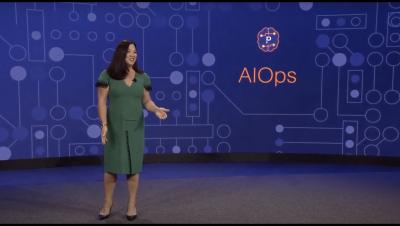Operations | Monitoring | ITSM | DevOps | Cloud
June 2021
Solarisbank Banks on PagerDuty to Keep Financial Services Online
Customers Choose PagerDuty for Real-Time Operations
PagerDuty Summit21 Fireside Chat: Connecting Customer Experience & Customer Service
How to Introduce Automation to Incident Response with Slack and PagerDuty
Major-incident war rooms are synonymous with stress. Pressure from executives, digging for a needle in a haystack, too much noise—it’s all weight on your hardworking technical teams. Incident responders clearly need a more effective way to collaborate across various technical teams. A method that both minimizes interruptions and keeps stakeholders up to date while ensuring everyone has the right level of context to do their job.
PagerDuty Summit21 Keynote: DigitalOps Now: Go Digital First with Modern Digital Ops Management
Leverage Observability With OpenTelemetry to Understand Root Cause Quickly
An observability solution should help any incident responder understand what changed and why. A lot has been written on the difference between monitoring and observability, but an easy way to understand how both are integral to incident response is to consider how customers use PagerDuty—with both monitoring and observability tools—to get to the right answer.
PagerDuty Summit 2021 Platform Release: Digital Operations Now
We are delighted to welcome you to another PagerDuty Summit and excited to announce a plethora of product developments designed to help you accelerate your digital transformation. And what an accelerator the COVID-19 pandemic has been for innovation. It really brought into focus the seemingly distant goal of becoming digital-first. Organizations who were truly prepared and benefited from the radical shift in how they did business thrived and rose to the top.
The Era of Hybrid Work Is Here: What Does it Mean for Ops Teams?
The largest remote working experiment the world has ever faced is entering a new phase as the era of hybrid work begins. For IT and DevOps teams on the frontline, this is a time of enormous pressure. Along with its many benefits, hybrid working can also bring considerable disruption. Enabling and supporting the hybrid model is the next big challenge facing organizations around the globe. We wanted to find out what this new reality means for these teams.
New Research by IDC, Sponsored by PagerDuty, Explores How Organizations Can Reach CloudOps Maturity
Many organizations have made the shift to the cloud in recent years, and many more are planning to or are just starting their cloud migration journeys now. However, some organizations struggle to realize value from this move. The benefits of cloud are clear: it’s flexible, scalable, and has a low cost of entry. But cloud can also bring complexity—creating new interdependencies, more services to manage, and more data and signals to monitor.
Uptime is Money
From Ticket-Time to Real-Time: Changing the Status Quo of Operations Work
2020 Was…Rough Keeping a Digital Business running has never been an easy job, especially over the last year. 2020 forced many businesses to accelerate their digital transformation initiatives faster than anyone imagined! Customers are demanding more capacity and reliability, the business is releasing more new services – faster than ever before, and companies are learning to use new remote working models, straining systems and people.
AIOps: The Future of DevOps
Since entering the scene in the late 2000s, DevOps has changed the way development and IT operations teams collaborate together to produce and deploy new digital services, apps, features, and updates. DevOps has helped to streamline the production process to ensure more efficient workflows and a more reliable service. This created a shared responsibility between development and operations teams to collaborate together with the goal of creating a premium product or service for their customers.
Get Ready For Industry 5.0: How Enterprises Are Relieving Digital Pressure in the Age of Seamless Connectivity
From connected factories to smart fleet management, technology is driving a new industrial revolution. To stay competitive, industrial enterprises are building on the efficiency gains delivered by automation and other pillars of Industry 4.0 to adopt more advanced digital solutions for smarter, faster working.














